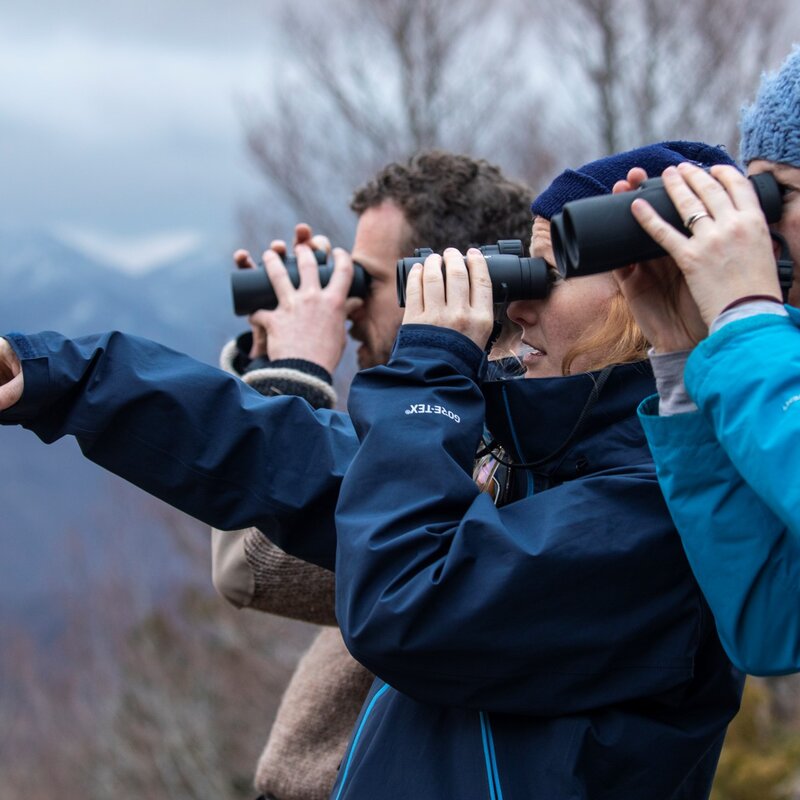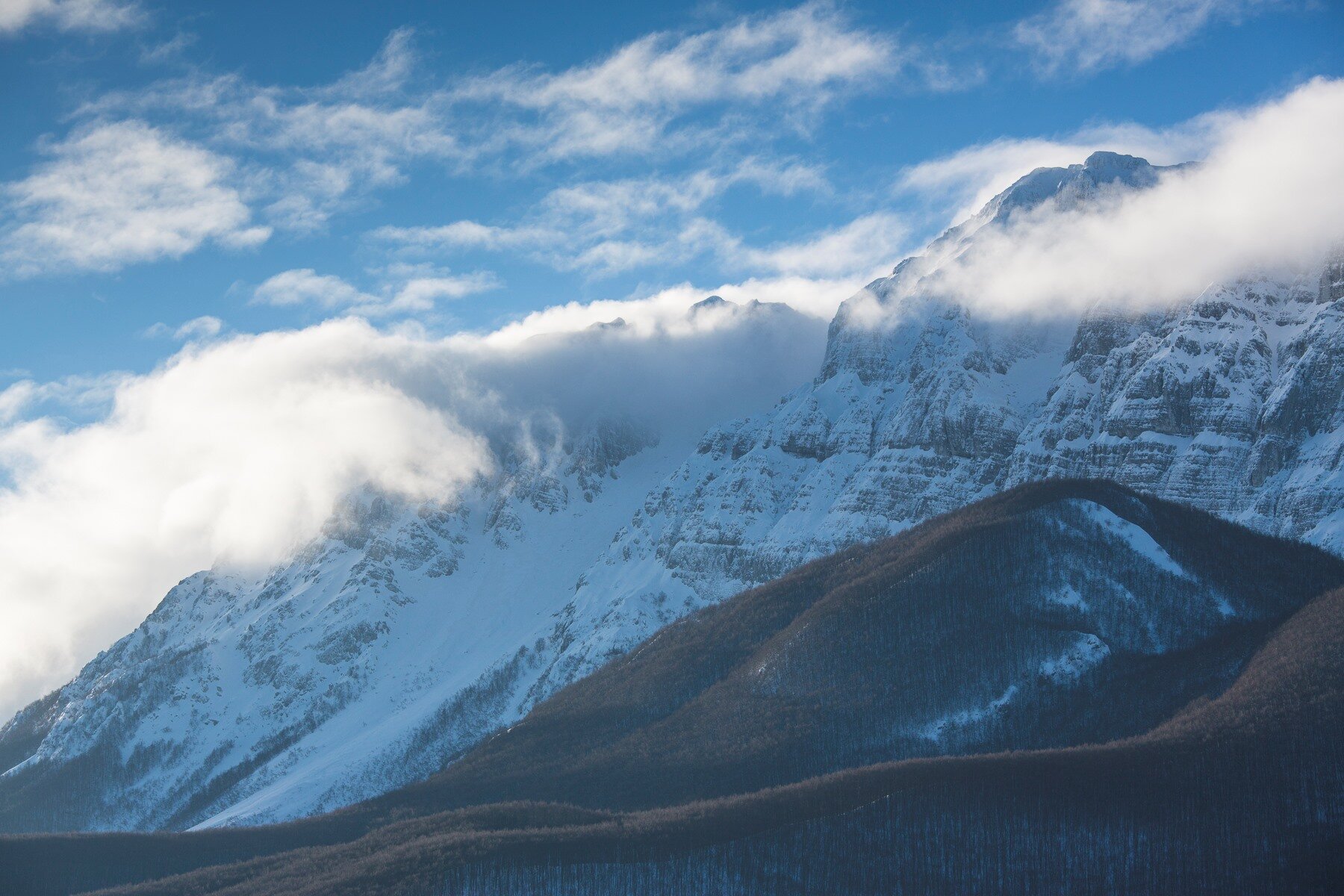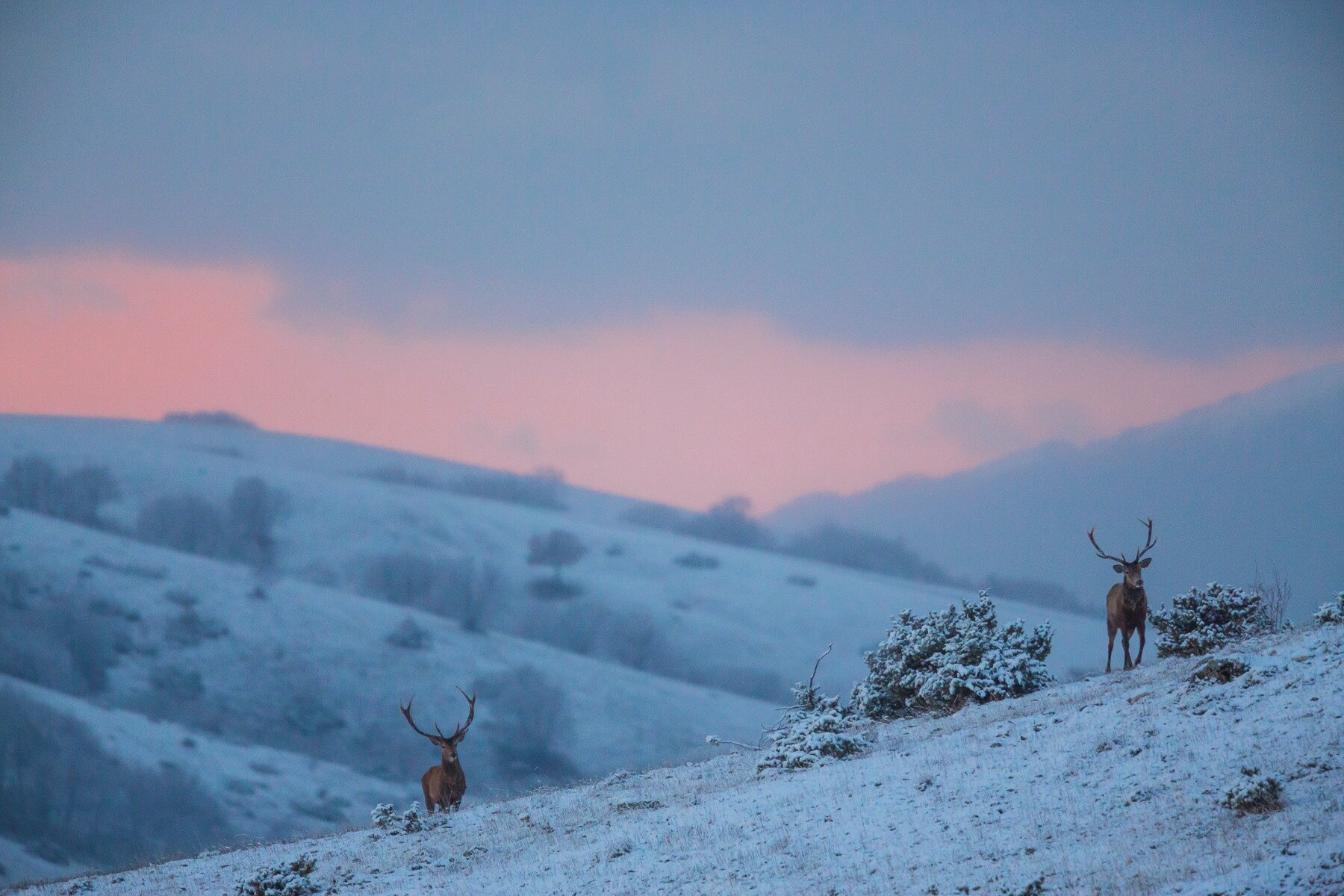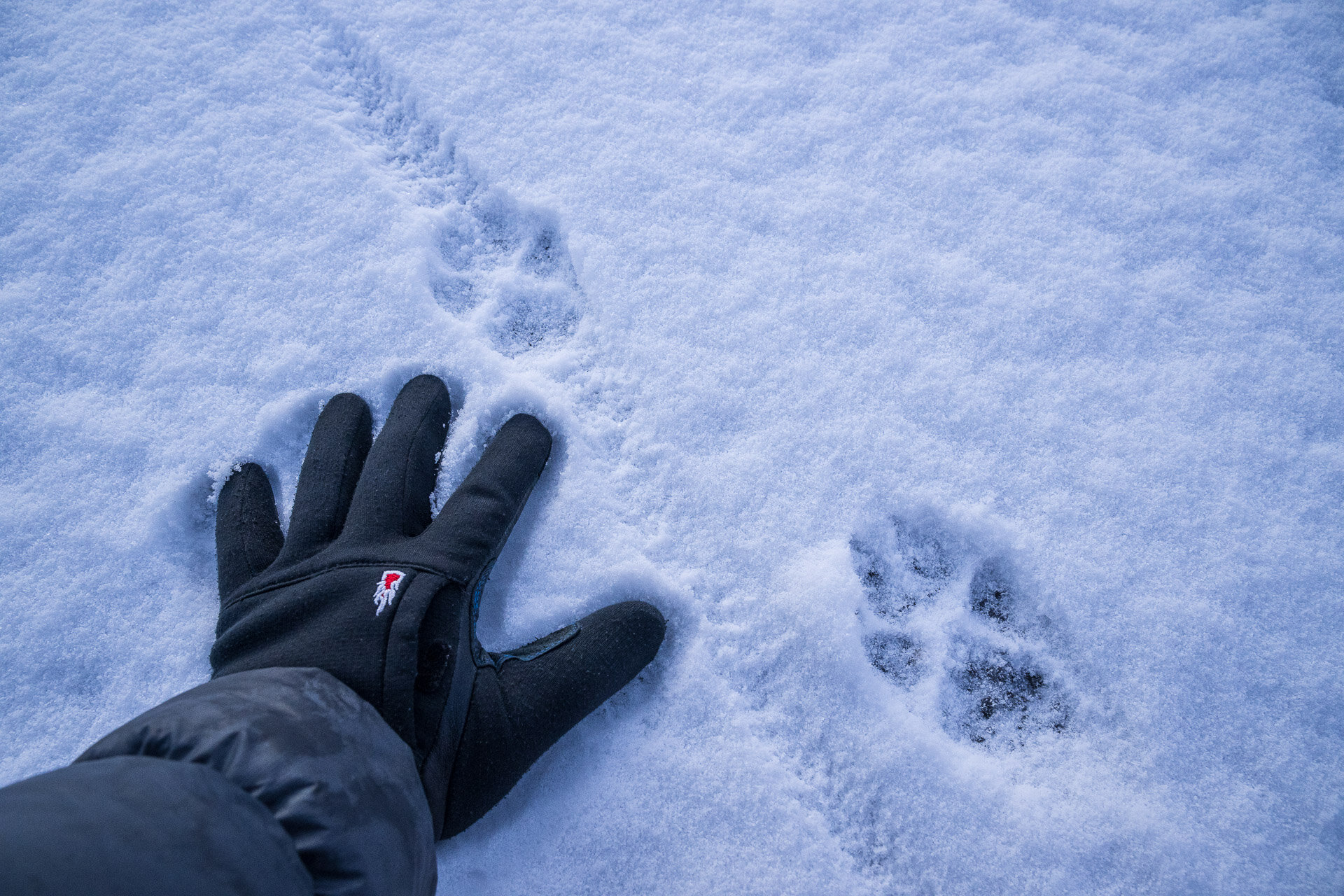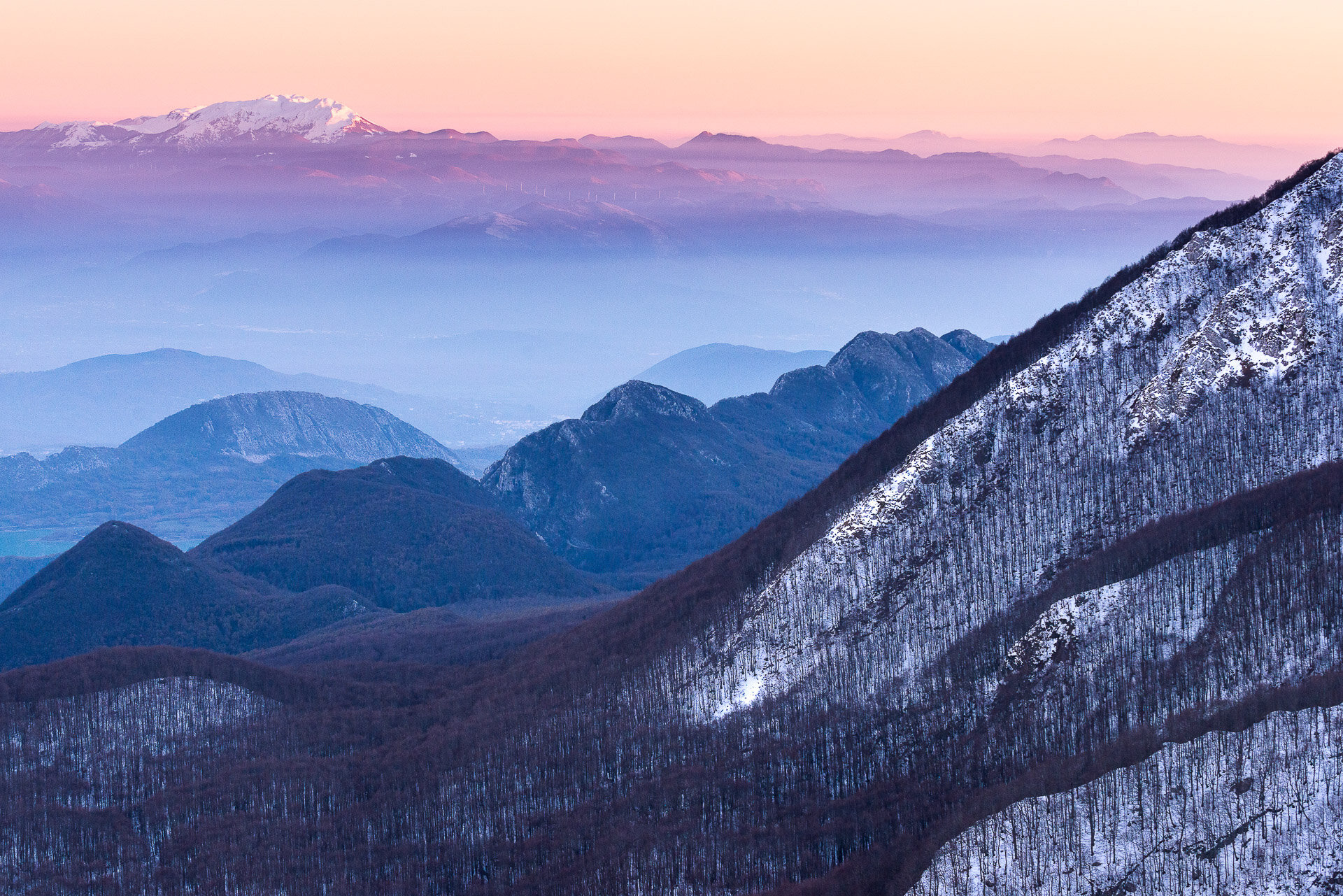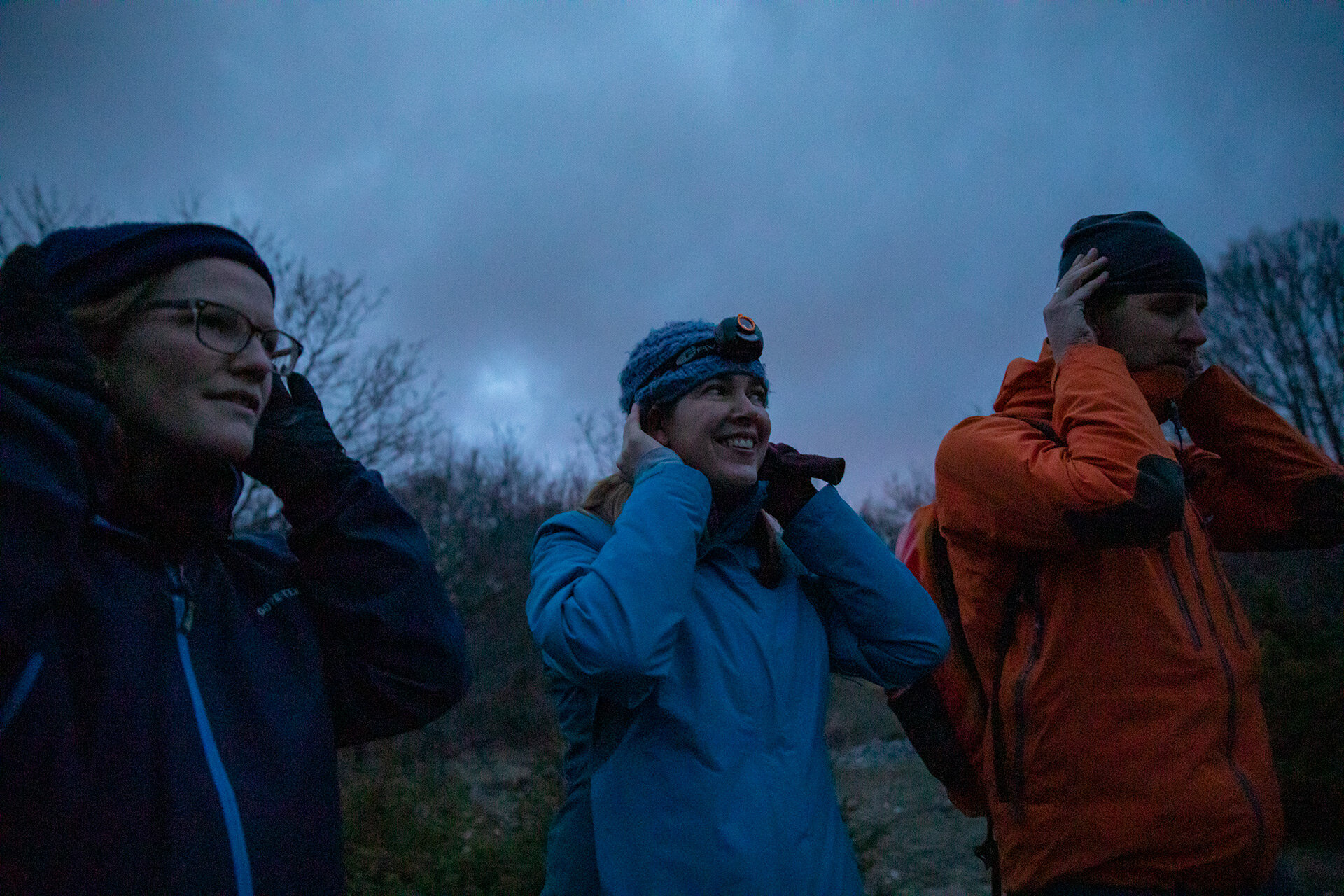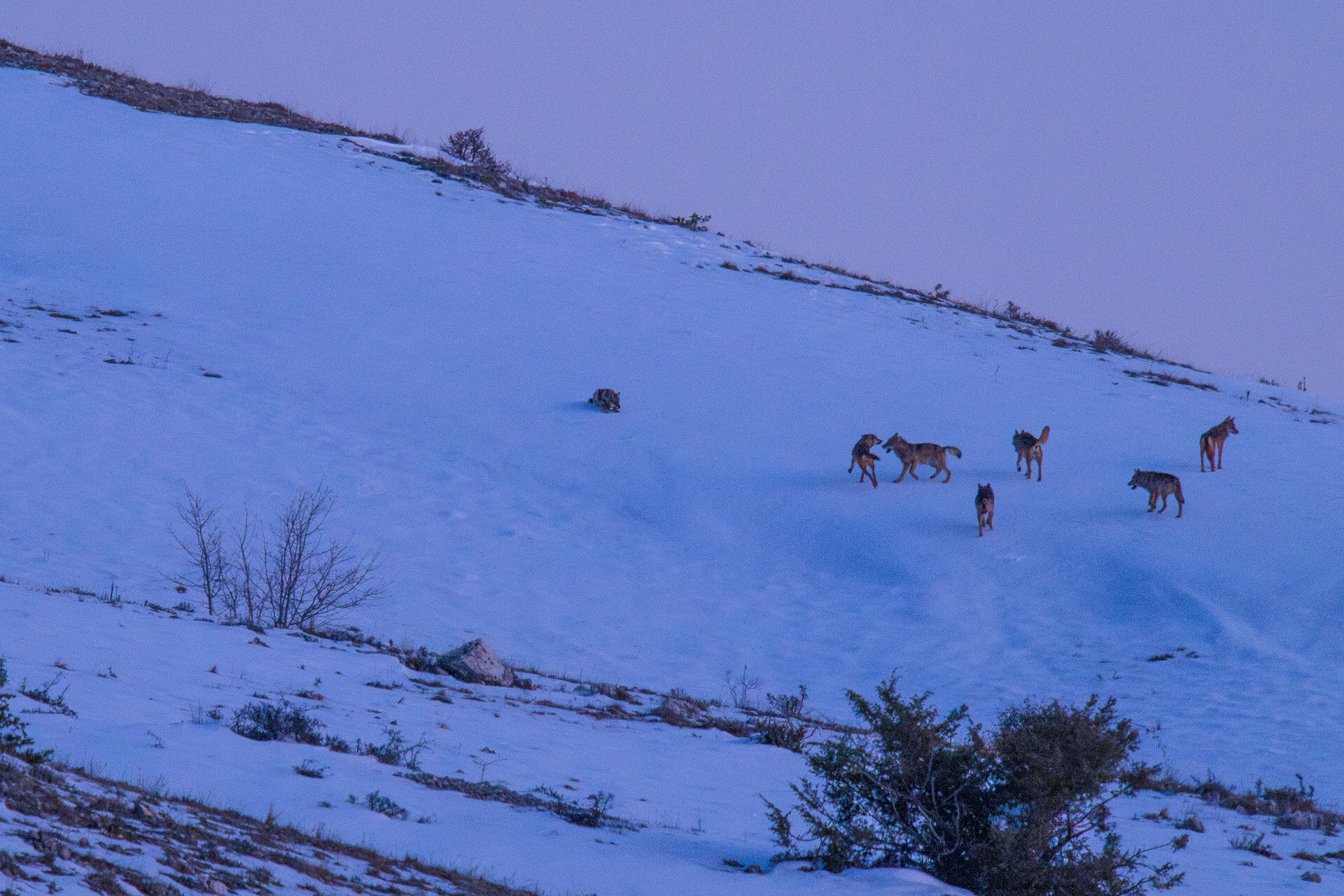When it comes to preparing a rucksack for a winter hiking adventure - let's forget, for the moment, about bivouacking in the open air, which is, by the way, forbidden in Central Apennines - it is not taken for granted that everyone knows what they really have to bring or what they can safely leave at home, in the warmth of the wardrobe.
It is not only the extreme temperatures, a few degrees below zero, that put the average person's resistance to the cold to the test; much will also depend on other factors, such as wind and humidity and, of course, the type of activity one is going to do. Because, let's face it, it is one thing to walk uphill or in any case to be in constant movement, quite another, for example, to have to maintain adequate thermoregulation in the case of long stalking trips to try to spot wildlife, situations in which, in addition to silence, it is a case of remaining almost motionless for hours.
But how does one defend oneself against the cold? While it must be assumed that everyone has, due to genetic, physiological and lifestyle characteristics, their own resistance to this factor, it must certainly be said that there is plenty of scope to face a mountain experience in winter and enjoy it even if you are used to living in milder cities and doing most of your activities indoors.
In this article, we have asked two Wildlife Adventures guides, Andrea De Angelis and Valeria Roselli - international Mountain Leaders and Wolf-Trackers who operate in almost all weather conditions and have experienced the mistakes, as well as the benefits of sound advice - to help us outline those elements that are useful in overcoming the most common obstacles that separate us from comfort while experiencing our immersion in wildlife in snowy and/or cold environments.
Rule number one: layer up!
"Resistance to the cold is certainly also a matter of acclimatisation, i.e. allowing our organism a suitably long period of time in the mountains so that it can get used to them, also psychologically," Andrea De Angelis and Valeria Roselli explain. We are not in extreme environments like Alaska, but it is one thing to face an excursion protected by the trees in the forest, as in a beech wood, and quite another to go beyond two thousand metres on some bare ridges swept by the winds. The characteristic of the mountain environment in the Mediterranean area, they remind us, is that of extreme variability of conditions, depending on the exposure and altitude, the type of vegetation and habitat, the time of day, etc. "We often observe that even wolves choose their places of relaxation depending on their thermoregulation needs of the moment: in winter, early in the morning, it is not unusual to observe a pack basking blissfully in the first warm light of the rising sun after a long freezing night, vice versa on hot summer days they prefer the cooler positions and slopes."
Here, if we go back to the natural endowment of wild animals, we will notice that, in mammals, there is an outer coat of long, tough, waterproof hair, ideal for keeping out moisture and wind, and another underneath, denser and woolly, which, almost like a health shirt, helps them retain heat. Layers make all the difference and it is worth building our cold weather strategy on this. We dress in such a way as to continually adapt our need for comfort to the outside temperatures and conditions; for example, it will be very important to remove the heaviest layer (duvet) from the start in the case of a long uphill stretch where, if overdressed, we would soon incur the first of the adverse factors affecting our thermoregulation: don't get to the point of sweating, because the sweat, as it cools on the body, will tend to subtract heat from our body supply and, it should be made clear, arriving at the end of a windswept slope with a sweaty back is also a rather unpleasant experience. "Don't worry about slowing down the walk or the group" Valeria points out; "our job is also to make sure that everyone has time to adapt their clothing to the ever-changing conditions".
A good strategy is to keep a windproof jacket, or a heavier layer, on hand (perhaps attached to an outer strap of the rucksack), so that you can cover yourself immediately when needed, without having to turn everything inside out in search of the necessary garment. When it is cold outside, it is indeed important to act promptly and, if not in advance, with good timing. So, in essence: a windproof layer, a hat, gloves (but also sunglasses) must always be within easy reach and readily wearable.
Make the right choise! Materials, garments and fit
"The imperative" stresses Andrea, "is that the underwear layer, as well as the socks, must be made of wool, not cotton. When cotton gets damp, it loses all its insulating properties, so wool, wo-ol! When wool is damp, it still manages to keep the heat in and, on contact with the body, dries fairly quickly. Another requirement, in spite of the shapes and fits on the global market, which for aesthetic needs and fashions are increasingly close-fitting, is that the garments should not be too tight but rather fit generously, comfortably. This is because overly tight-fitting garments - from socks to shoes - make life difficult for blood circulation by causing the body's appendages to cool more easily and, in severe cases, promote short-circulation and frostbite processes. So when shopping remember: loose (comfortable) is good, tight is bad, for shoes as for any other garment. The protection of the hands from the cold, which is particularly delicate in the case of immobility from stalking sessions, deserves an important discussion. Compared to gloves with fingers (anatomical shape, which mimics that of the hands), mitten gloves or mittens are much more effective against frost because, as they do not have an opening for each finger, they do not expose the fingers to the cold and leave them in contact with each other to keep warm.
Therefore, when the cold is relevant (but in the case of the perception on the hands it is extremely relative to the person), they are to be preferred. However, the mitten glove also has the disadvantage that it does not allow the fingers to move freely and could complicate the use of photographic equipment or, in general, make handling objects more difficult. In the case of stalking in the depths of winter, on very cold days, the possibility of wearing a pair of anatomical gloves (with fingers) in contact with the skin should be considered, allowing for quick manipulation of the equipment, protected by an outer mitten glove. Whatever strategy is adopted and the type of glove chosen, it is essential that the gloves are put on before the hands get cold; "Strange as it may sound," explains our guide, "if we are going to have a long wildlife-watching stop, we always try to arrive on site with warm hands and, to put on gloves already a few minutes before the stakeout, while still walking, so as to 'store' in the upper limbs the heat produced for the longest possible period."
Listen to us if you can!
If you have any doubts while in the cold, always ask your guide for advice. They are the experts and have already experienced most outdoor scenarios and situations.
"For us there is a world of difference between 0°C and -10°C, or between these and a deceptively mild 4-5 degrees accompanied by drizzle for two hours," says Andrea "But we know how to deal with it. We are professionals. We can read people's facial expressions and attitudes quite well, and we can usually tell if you're cold or not, and give quick responses to situations. We have a lot more problems with 'tough guys' than with beginners, because tough guys don't tell you what's going on - they hide their feelings and emotions, so if they have a problem, it tends to get worse. The participants who are 'tough guys' are often more difficult to handle and, it is always worth remembering, in a group all it takes is one guy in a very uncomfortable condition to influence everyone's dynamics." And, lest there be any misunderstanding, it should always be remembered that the experience that one has with us should not necessarily be taken as one in which one has to endure discomfort, quite the contrary: the mountains are an environment in which everyone, us guides first, learn to be humble and how an attitude of stubborn positivity dressed in humility allows one to experience outdoor adventures in an incredible environment to the fullest.
"We never fail", adds Andrea, "to suggest to participants in our wildlife watching experiences, some simple tricks to enjoy a stakeout as much as possible. Simply staying close and, if possible, in contact, helps a lot to maintain body heat on cold days, as does placing an insulating layer between us and the ground (a waterproof garment, a mat or even a rucksack emptied of its contents), which contributes greatly to a feeling of wellbeing when sitting for more than an hour around dawn or dusk."
-
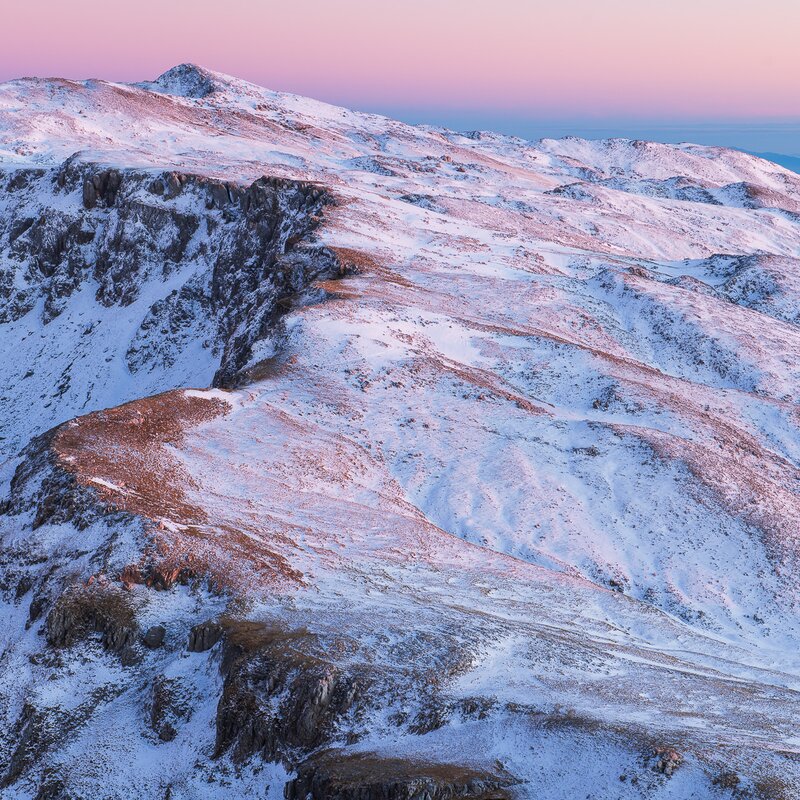 from January 3 to March 7, 2026
from January 3 to March 7, 2026Winter moon over Mainarde mountains: with wolves and chamois
Explore the Molisan Mainarde amid snowy silence and moonlit ridges. Follow the traces of wildlife, hike through pristine forests, and discover the magic of winter nights. A weekend retreat for those seeking adventure, authenticity, and quiet wonder.
- Sunrise and sunset, Snowshoe hiking, Forest and valleys
-
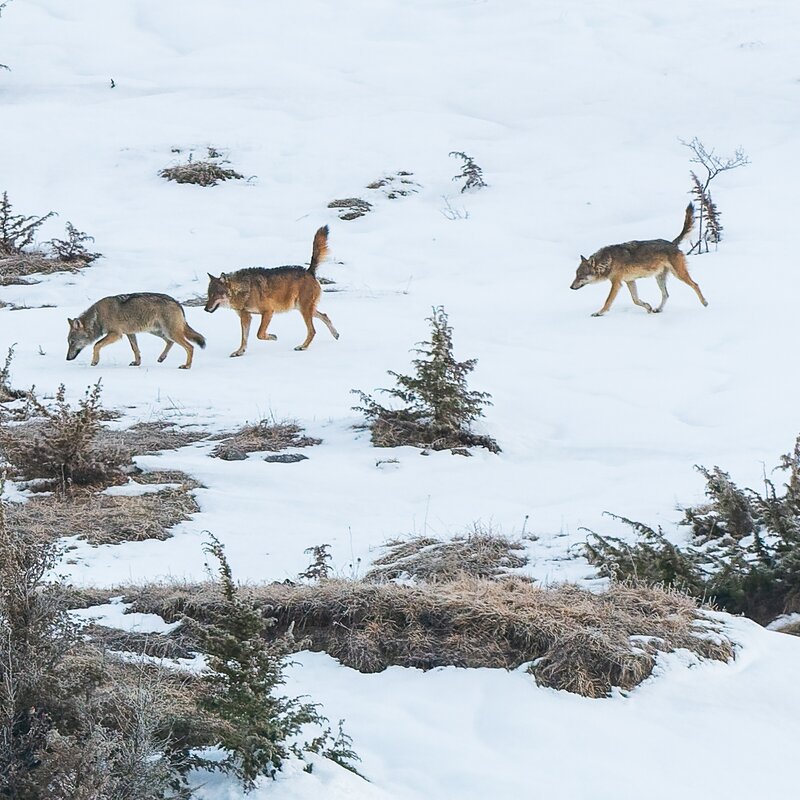 from January 15, 2026 to March 4, 2027
from January 15, 2026 to March 4, 2027Wolf Tracking in Abruzzo
A focused exploration into the Apennine wolf, conducted in the winter environment of Abruzzo. This experience combines guided hikes with special sessions where you can learn to spot wolf signs and understand their ecological importance in the Italian region.
-
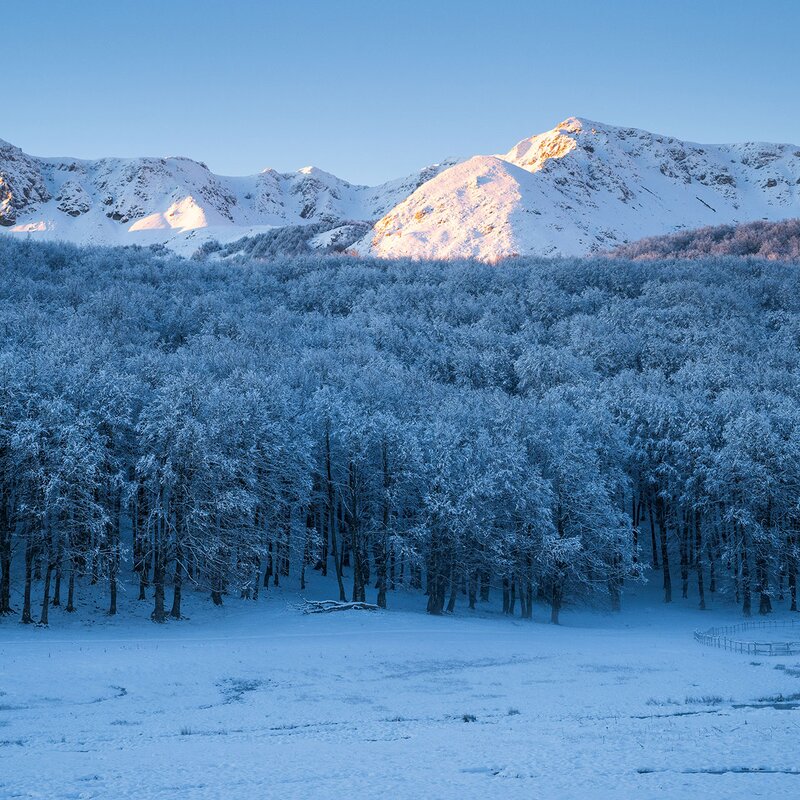 from January 10 to February 28, 2026
from January 10 to February 28, 2026Stardust, a snowshoe weekend in Abruzzo
A snowshoe weekend in the Abruzzo, Lazio and Molise National Park with an overnight in a mountain cabin: two days immersed in the wilderness of Mount Meta, amid breathtaking and unique natural scenery.
- Snowshoe hiking
What to pack for a cold-weather adventure: an example of a kit list
The kit list below is intended to give you an idea of what you might take with you on a cold-weather adventure in the Apennines; in any case, each place/situation/activity has its own specific requirements, so be sure to consult your guides or experts before packing for each individual experience.
Clothing Checklist
- Technical jacket, windproof and waterproof (preferably with a hood)
- Winter down jacket
- Warm wool or fleece sweater
- Thermal base layers (wool or synthetic)
- Spare technical T-shirts
- Winter hiking pants
- Waterproof overpants
- Winter wool or synthetic socks + extra pairs
- Warm, waterproof winter hiking boots
- Gaiters
- Winter hat (should cover the ears)
- Winter neck warmer or buff
- Lightweight wool or windproof gloves
- Waterproof gloves (can be layered with lighter gloves on colder days or when wet)
Gear Checklist
- Hiking backpack (at least 25+ liters for day hikes, snacks, extra clothes, etc.)
- Rain cover for backpack
- Water bottle or thermos (minimum 1 liter)
- Headlamp
- Sunglasses
- Sunscreen
- Personal hygiene kit (toothbrush, tissues or biodegradable wipes)
- Emergency kit (Compeed®, band-aids, any necessary medications)
Additional Items for overnight stays in a Mountain Hut
- Extra thermal underwear (merino wool recommended)
- Spare underwear and socks
- Personal towel
- Your favorite snacks
- Earplugs
Don’t Forget
- Cash and credit card (VISA and Mastercard are widely accepted, but some huts may have no signal)
- Valid ID or passport (check expiration date)
- Tickets for transfers (check in advance to ensure you’re on time)
- Phone + charger + power bank
- Travel adapter: Italy uses the Europlug (Type C and F), 220–230 volts
- Travel insurance
- Any personal medications
